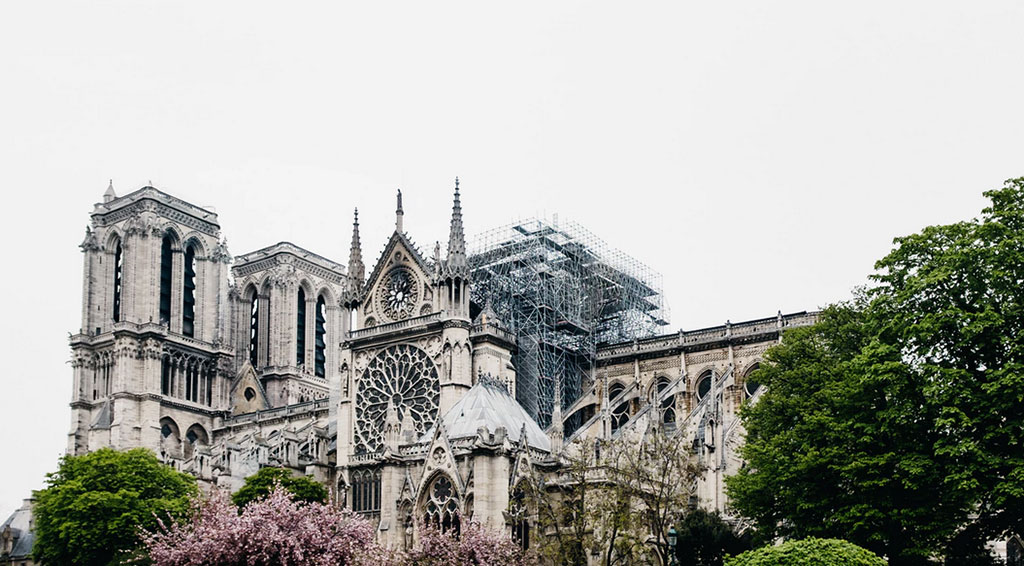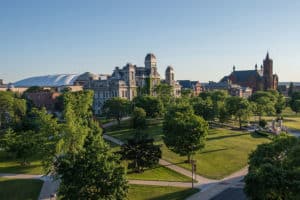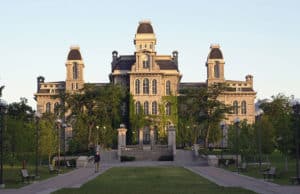Notre Dame’s Legacy Will Endure, Even If Burned Elements Of The Cathedral Can’t Be Reproduced

The term gothic as applied to architecture was originally used as a pejorative by the renaissance artists of the 16th century to dismiss buildings built in a style and by a culture that they argued was primitive and ugly. To the modern ear it describes a style that is much admired, that was widely copied by revivalists in the 19th century, and that conjures up historical images of venerable religious and educational landmarks. But the designers and builders of the great gothic cathedrals were the engineering innovators of their day. The medieval cities of northern France, in a period of economic expansion, competed as cities and countries ever have, to be recognized for their superlative structures, the longest bridge, the tallest tower, and so on. And that competition drove advances in engineering, design, and construction that would be an inspiration to architects and engineers for centuries to come.
In pursuit of their goals, the stone masons of the gothic era stretched the structural capacity of unreinforced masonry to its very limits and, in doing so, defined the style. Much of what the causal observer might think of as the decorative features of the gothic style, were in fact technical solutions to the technical problems of trying to build for height and light. A pointed arch funnels its own weight down mostly vertically and so can span a greater distance with smaller supports, the semi-circular arch of the Romans, by contrast, generates massive horizontal thrust that must be resisted by heavy abutments.
The emblematic flying buttresses are there to lend support to a structure that would otherwise be too tall and narrow to resist overturning forces from the wind. Modern skyscrapers that couple a lighter exterior frame with a more rigid interior core are deploying very similar structural principles. The tall thin columns coupled with the buttresses which support the vaulted roof of a gothic cathedral open up the walls to their most skeletal form and allow for maximum illumination and artistic expression in the stained glass. Many architectural historians have noted the similarity of this approach to the light curtain walls that emerged in modern architecture.
The elegant ribs of the vaulted gothic roof brace the walls against each other. Even the pinnacle, the pointed ornately carved vertical piece at the outside edge of the flying buttress, which appears to be the epitome of a decorative flourish, is actually a very clever form of prestressing to limit cracks in the masonry under high wind conditions.
The legacy of Notre Dame de Paris is one of innovation, evolution, and adaptation. Construction began in the 12th century, the flying buttresses were first added sometime in the 13th century, and then replaced in the 14th century with a stronger design. Renaissance, reformation, and revolution followed, and each in their turn brought changes big and small to the cathedral, as the religious mores and architectural styles of each successive era shifted and realigned. In the late 18th century, the original spire was removed because it had been damaged by wind. In 1844, Eugène Emmanuel Viollet-le-Duc, a French architect who restored many medieval landmarks, embarked on ambitious renovations that sought to address the ravages of 700 years, but also added a new spire and made other significant additions.
The spire destroyed in this week’s fire was his design. By the 1990s, air pollution had so degraded the building that it required significant rehabilitation and replacement of the limestone on the exterior. The project took nearly a decade as both the oldest sections and the 19th century additions were badly corroded. In recent years, there were many media reports about the “crumbling” Notre Dame, lamenting the poor condition, noting that the stone gargoyle downspouts where being replaced with PVC pipe.
As the teams of engineers, architects, historians, artists, and builders come together to restore the damage after this week’s fire they will need to engage many stakeholders. The city, the church, the citizens of France, and many others will have opinions and priorities for the project. The task will be immense, complex, and likely take decades, presidential promises notwithstanding. Those who know the history of the building will be watching with interest as the different debates play out. What does restoration mean? Will new materials and techniques be used? What constitutes an “authentic” restoration? What can we learn that might protect other historical structures or lead to other advances?
Some skills that were used to build the original Notre Dame de Paris are impossible to reproduce at the scale that would needed. In the 1990s restoration, the limestone was difficult to match as the original quarries were long since buried under an expanded Paris. The volume of timber that would or will be necessary to reproduce a faithful copy of the roof that burned is unlikely to be available for harvested in any kind of sustainable way. And even if it is, then surely it will not be cut with hand tools as the original would have been?
To insist on replacing all elements with as close a facsimile as can be achieved to those that made up the structure that was in place two weeks ago is to ignore the rich history of repair, renovation, and reimagining through which structure has survived. Every stone mason, architect, engineer, and builder who has played a part in that rich history used all the knowledge, materials, tools, and techniques available to them. It seems only fitting that the next chapter of Notre Dame will do the same. The gothic stone masons were innovators who would expect no less.
Sinéad Mac Namara is an Associate Professor in Architecture and Civil Engineering at Syracuse University.
Add CEOWORLD magazine to your Google News feed.
Follow CEOWORLD magazine headlines on: Google News, LinkedIn, Twitter, and Facebook.
This report/news/ranking/statistics has been prepared only for general guidance on matters of interest and does not constitute professional advice. You should not act upon the information contained in this publication without obtaining specific professional advice. No representation or warranty (express or implied) is given as to the accuracy or completeness of the information contained in this publication, and, to the extent permitted by law, CEOWORLD magazine does not accept or assume any liability, responsibility or duty of care for any consequences of you or anyone else acting, or refraining to act, in reliance on the information contained in this publication or for any decision based on it.
Copyright 2024 The CEOWORLD magazine. All rights reserved. This material (and any extract from it) must not be copied, redistributed or placed on any website, without CEOWORLD magazine' prior written consent. For media queries, please contact: info@ceoworld.biz
SUBSCRIBE NEWSLETTER











